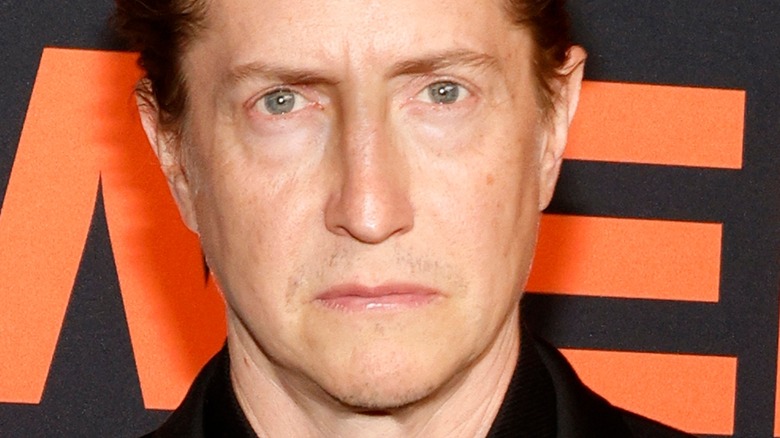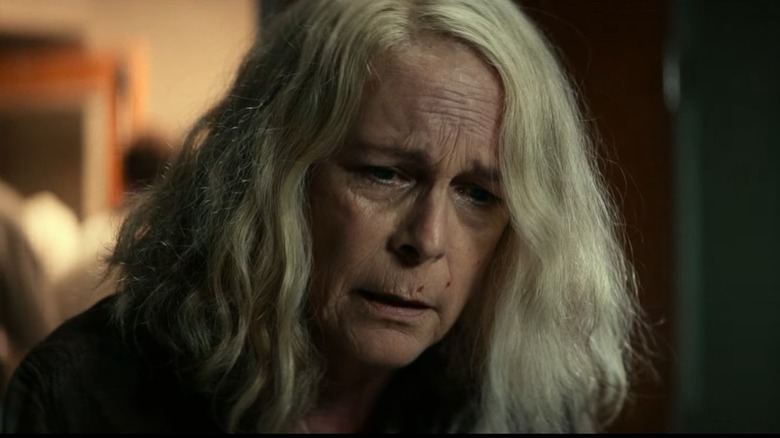David Gordon Green Explains The Reasoning Behind The Time Jump In Halloween Ends
There have been differing fan opinions on the recently-released "Halloween Ends," the final installment of the trilogy that began in 2018. While some enjoyed the focus on newcomer Corey Cunningham (Rohan Campbell), others wanted more of Laurie Strode (Jamie Lee Curtis) and, of course, Michael Myers (James Jude Courtney).
However, one thing is clear -– "Halloween Ends" certainly doesn't take place directly after its predecessor, 2021's "Halloween Kills." After being stabbed in the gut by Michael in 2018's "Halloween," Laurie is stuck recovering in the hospital throughout "Halloween Kills" as Tommy Doyle (Anthony Michael Hall) and the townsfolk of Haddonfield, Illinois, attempt to end the nightmare once and for all. Laurie also suffers the loss of her daughter Karen Nelson (Judy Greer) at the hands of Michael.
Yet when audiences are reunited with Laurie in "Halloween Ends," she's an entirely different person. There are some shadows of the past, especially as she reflects on her trauma in a memoir. Still, she owns a quaint home with her granddaughter Allyson Nelson (Andi Matichak), gets giddy at the idea of romance, and has a refreshed hairdo. In fact, she even decorates the place for Halloween –- the holiday that has been the bane of her existence since Michael came home over 40 years prior.
What's the purpose of the four-year time jump between the two films? In a recent interview, director David Gordon Green explained the reasoning behind this decision.
Laurie Strode needed to be in full health for her final battle with Michael Myers
"Halloween Ends" could have picked up where "Halloween Kills" leaves off, with Laurie injured and the members of the Haddonfield mob dead after thinking baseball bats would do the trick. But for director David Gordon Green, who wanted the trilogy's final installment to have one last Laurie vs. Michael battle, he knew this couldn't be done unless she was returned to full health.
"There was a period of time where it was gonna be all one linear continuous type of movie. But then how are you gonna get this climactic battle out of her?" Green said in an interview with Collider. "So then we made decisions to evolve it and say, 'Okay, there's a time jump between Kills and Ends' ... we can meet an optimistic Laurie Strode that has gone to therapy perhaps and she's decorating for Halloween, she's inviting this holiday, she's making pumpkin pies..."
Jamie Lee Curtis agreed with Green's decision. In an interview with The A.V. Club, she said it would have been difficult to start a movie after all the violence at the conclusion of "Halloween Kills." Following that much loss, heartache, and gore, she said, "Everybody needed a little interlude." Curtis added that, structurally, "Halloween Ends" is extremely similar to the 1978 original. Both begin with a shocking murder and continue with character development and a slow, steady buildup of the plot.

